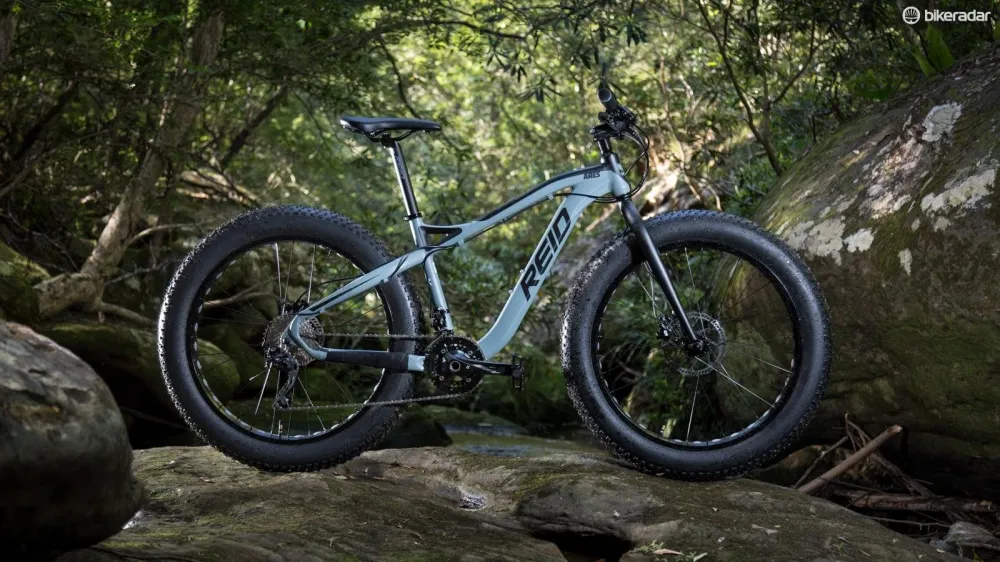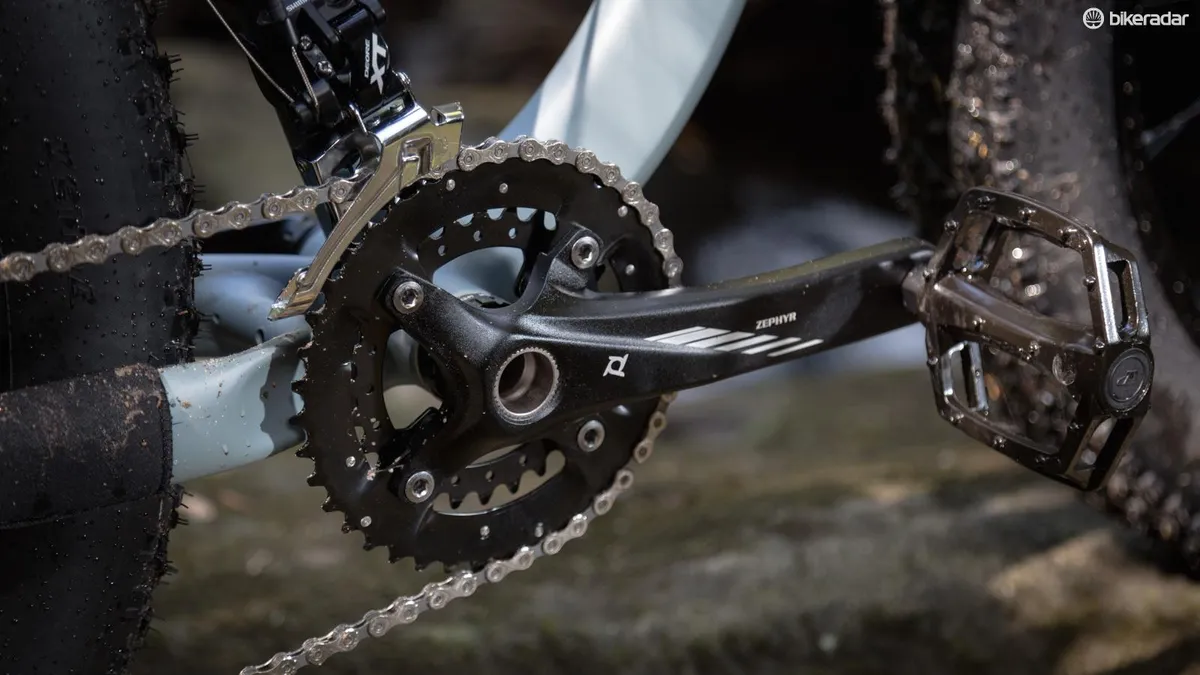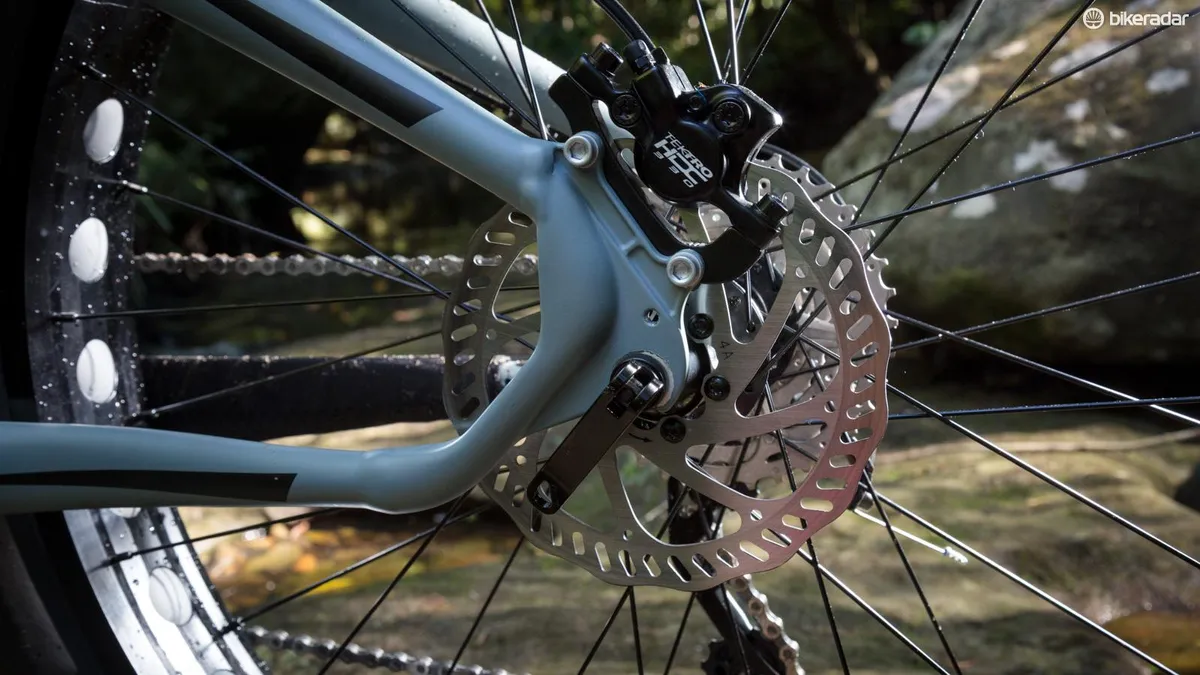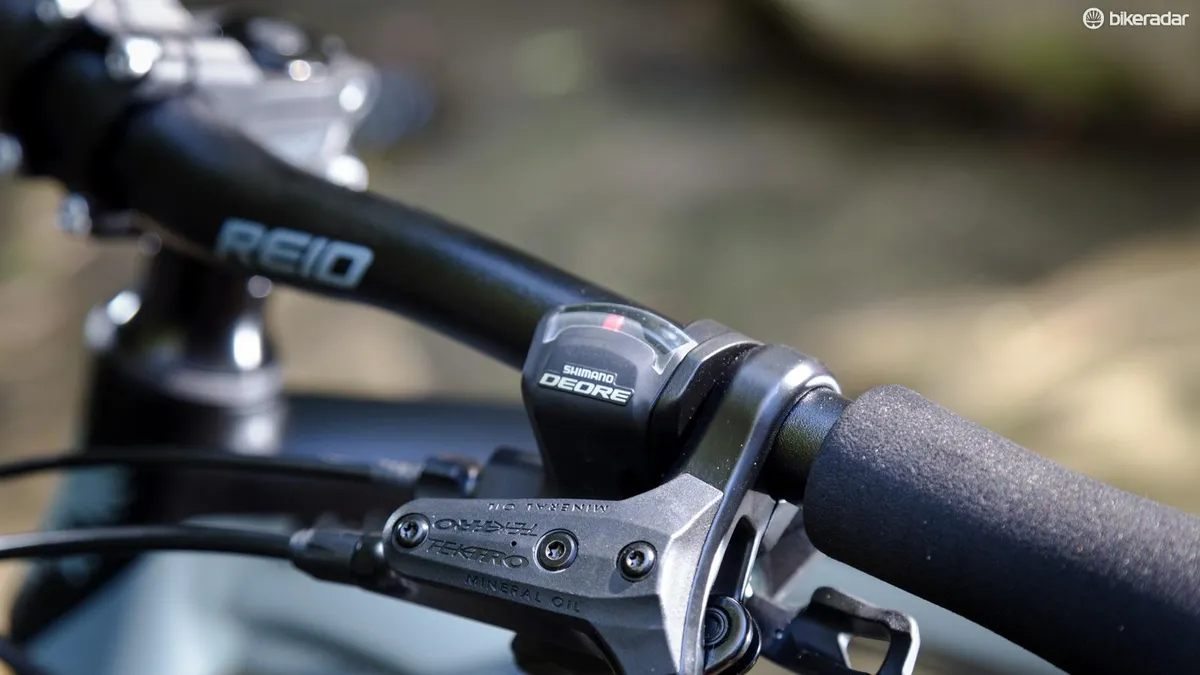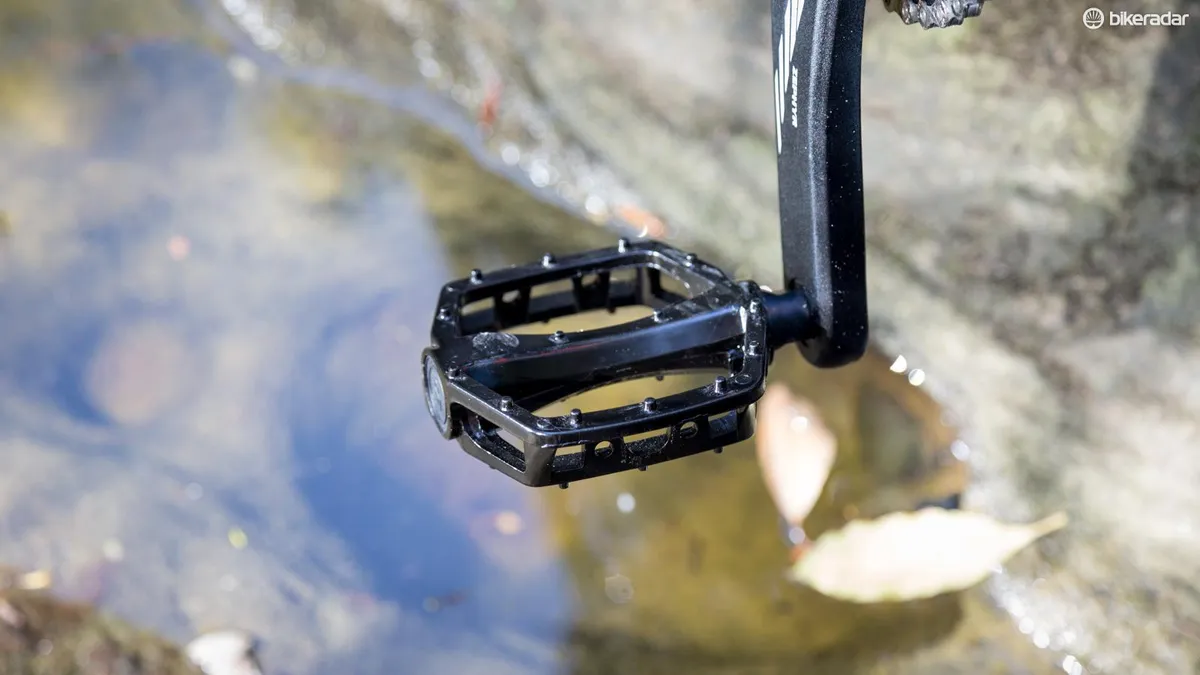Fat bikes are an interesting breed, with a pretty niche use. If you're not familiar, they're designed for flotation either in sand or snow, but are still capable for all purpose trail riding (though it's a pretty different experience). Yet for many of us, the price tag is too much to justify 'yet another bike'.
Enter Reid, with its Ares fat bike (and its Zeus sibling, more on which below).
The Australian bike brand is best known for low cost consumer-direct bikes, and the Ares is no exception. In Australia the Ares costs a mere AU$799 so if you wanted to try a fat bike without breaking the bank, now you can. (It's also shipping to the US, priced $1,060, and UK, pricing TBC. If you're reading this from either side of the Atlantic, there's an argument for reducing our rating by one star.)
As the company's first foray into wide tyre machines, the Ares offers some wild frame tube shapes, a few interesting spec choices and a seriously fun ride.
Just lumbering along
At AU$799, the Ares falls into a budget category that few can compete with. With that, it isn’t going to wow you with newest brand name components, gobs of suspension travel, or lightweight anything — although you do get a Shimano XT front derailleur. But, nobody ever said something has to be fancy and expensive to be loads of fun, now did they?
We tested the Ares on everything we could find. It got a workout on some rough and technical singletrack around Sydney, and we even ventured up the picturesque Northern Beaches to see how the wide tyred machine attacked the sand and surf.

We definitely got some funny looks riding along Sydney's Northern Beaches
When we got our hands on the Ares, it was only available in one size, though Reid says a full range is now in production. That said, Reid has nailed the geometry on our size medium (17-inch) tester. The 70-degree head angle keeps the clumsy bulbous rubber inline and makes for a surprisingly nimble ride. Combine that with a short 70mm stem and compact (for a fat bike) 455mm rear end, and you've got a surprisingly agile ride. It is, however, absolutely no lightweight at 15.33kg (33.73lb).
The ultra-wide 4in rubber allows you to simply roll over obstacles you’d usually have to think twice about on a standard mountain bike tyre. That said, the latest premium fat bikes have moved onward and outward from here, offering 4.5 and even 5in wide tyres for conquering the worst sand and snow.
The TIG-welded alloy frame features radical hydroformed tube shapes, and clean tube junctions – something by no means guaranteed on a bike at this price. There’s no detectable flex through the chassis, and the robust frame and fork add to the precision of the handling.

The Ares sees front and rear quick releases
While it’s no doubt a result of budget constraints, the front and rear quick releases are somewhat of a let down. Especially when running low tyre pressures, there’s noticeable steering feedback from the braking force, and extra care is needed to ensure proper quick-release lever tension and brake alignment. Under a heavy load we actually managed to rip the rear wheel out of the dropouts, before learning to really crank down on the quick release.
Unfortunately, the lack of noticeable give in the robust alloy frame translates into a rougher ride. Although inflating the 4in rubber well below 10psi did help with the small stuff, your body still has to absorb the big hits. This isn’t an issue riding down the beach, but hit real mountain bike trails and your body takes a beating.
Venturing up the coast, the Reid performed well with the wide rubber offering enough flotation to confidently ride at pace along the wet sand near the water, even the gloopy stuff the rolling surf had just wet. Now getting to the wet sand is a different story – in the deep, grainy dry stuff the Kenda rubber struggles to find traction and leaves you spinning for your life. Either way, it's pretty fun!
Wait. You get all that? For just that?
For a bike under AU$1000, the Ares offers a pretty bling looking frame with hardly a round tube in sight. No, you don’t get internal cable routing, or (as we might have mentioned) thru-axles, and you’d have to get creative with a dropper post, but again that comes back to price – even the cheapest dropper is worth the better part of this complete bike.
The chunky front fork sees a 135mm QR dropouts, a 180mm Tektro brake rotor and plenty of clearance for the 4-inch rubber wrapped around 80mm wide rims. At the rear we see a smaller 160mm rotor and far more limited clearance though the chainstays. With a 100mm wide bottom bracket shell, Reid has sacrificed some tyre clearance to allow for crank clearance and to limit heel overlap with the frame.
Reid has also included front and rear rack mounts, opening the Ares up for loaded riding if that tickles your fancy.
As with many bikes from the Australian brand, it’s not uncommon to see a build dominated by Reid branded and other generic components. However, considering the price, the parts are all sensible choices.
A 2x10 Shimano drivetrain is something more typical on bikes twice the price of this. With this, the Shimano Deore logo is seen in trigger shifters and 10-speed rear derailleur. For off-road use it would be nice to have a clutch-equipped rear derailleur to ensure chain engagement and reduced noise, although that’s really asking a lot for the price.

XT on a budget bike? That's different.
A small surprise is a XT front derailleur, seemingly used as lower-cost models don’t offer the same chain clearance.
To save a bit of cash, the Ares is equipped with a ‘Prowheel Zephyr’ alloy crankset. It doesn’t move as well as a Shimano crank, but still offers reliable and quick front shifting. Its overall design is rather similar to that of Shimano’s upper level cranks, and so is quite easy to remove for maintenance.
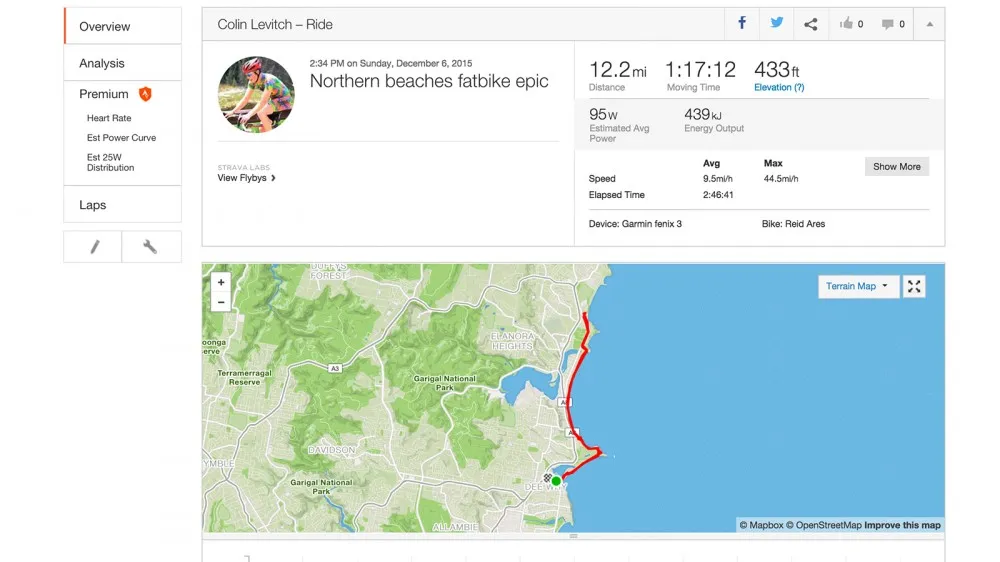
If you think running in the sand is hard....
Gearing range, in a word, sucked. With a 40/28t up front and an 11-36t out the back there just was not enough low-end gearing – especially compared with any of the big name fat bikes we’ve tested in the past. When bogged down in the sand, or rolling over the crest of a climb we wished for a few more gears. This range will be fine for those who aren’t likely to venture off the beaten path, but if you want to get a little muddy/snowy/sandy it will be a tall order.
The Tektro HDC 330 hydraulic brakes were a more pleasant surprise: while there’s not a whole lot of modulation on tap, there’s plenty of reliable power. The reach to levers can be adjusted, but the range is limited and certainly caters toward larger-handed riders. If that's not you, you may find yourself stretching to use the brakes.
Reid’s own-branded 80mm 26in wheels are wrapped in 4in Kenda Juggernaut rubber and are drilled for some weight saving. These fat bike-specific hoops are solid but quite heavy, as are the Juggernauts, weighing in at 1,300g a piece. This weight can certainly be felt when trying to accelerate out of a corner, or power over the top of a climb or over that last little bit of dry sand.

The tread on the Juggernauts is minimal
The Kenda rubber performs well on dry and dusty trails, though when things get loose, especially in the sand (or snow) something a bit knobbier would be advantageous. The conservative tread pattern helps with rolling resistance, though in beach and snow situations – what a fat bike is designed for – there’s just not quite enough bite.
The lock-on foam grips are good on paper, but only just bearable in use. As for the Reid branded saddle,the heavily padded peach is borderline awful, and we’re not sure what the bump in the middle of the saddle is there for.
In Australia, Reid has stores in each state, or its bikes can be purchased online with free shipping. If you decide to go the online route, build quality is generally good but never perfect and our Ares was no exception – on our initial outing we put the chain into the spokes pretty badly before tightening the derailleur limit screws a tad.
Verdict
It's worth quickly mentioning Reid's Zeus option, which costs AU$200 more. The orange paint job of the pricier model is sure to grab more attention, while the upgraded Avid hydraulic brakes are a great addition for those with lever reach issues. The Zeus also gets an upgraded hub in the wheels. That said, these upgrades don’t clearly justify the 25 percent price increase – the Ares just looks a better deal to us.
As we mentioned above, Ares – in an extremely rare occurrence – is better value in Australia than it is in the US and UK. This is because in Australia the brand is sold consumer-direct, whereas other markets work through a distributor and then a retailer, adding markups along the way. So while the Ares may just be the untouchable godfather of budget fat bikes in Australia, it has some competition for such a title elsewhere in the world.
This makes the Reid Ares a tough one for us. There are absolutely aspects of the Ares that could be improved, but we (as in BikeRadar's Aussie testers) keep coming back to that AU$799 price tag. It’s just so cheap, we can’t help but recommended it to those seeking a starter fat bike.
The fun quota aboard the Ares is absurdly high, and despite the brand's lack of experience in fat bikes, it’s a pretty well rounded machine. You probably wouldn’t want to take the Ares on a three-plus hour trail ride, but for cruising down the beach and two-wheeled adventuring it’s a pretty capable machine.

